Filter by
Note: As this project is architecturally topped out, the data is based on the most reliable information currently available. This data is thus subject to change until the building has completed and all information can be confirmed and ratified by the CTBUH.
You must be a CTBUH Member to view this resource.
One Vanderbilt
One Vanderbilt Place
Building
Architecturally Topped Out
office
composite
LEED Gold
427.0 m / 1,401 ft
58
42
162,600 m² / 1,750,212 ft²
Usually involved in the front end design, with a "typical" condition being that of a leadership role through either Schematic Design or Design Development, and then a monitoring role through the CD and CA phases.
The Design Engineer is usually involved in the front end design, typically taking the leadership role in the Schematic Design and Design Development, and then a monitoring role through the CD and CA phases.
The Design Engineer is usually involved in the front end design, typically taking the leadership role in the Schematic Design and Design Development, and then a monitoring role through the CD and CA phases.
Other Consultant refers to other organizations which provided significant consultation services for a building project (e.g. wind consultants, environmental consultants, fire and life safety consultants, etc).
These are firms that consult on the design of a building's façade. May often be referred to as "Cladding," "Envelope," "Exterior Wall," or "Curtain Wall" Consultant, however, for consistency CTBUH uses the term "Façade Consultant" exclusively.
Material Supplier refers to organizations which supplied significant systems/materials for a building project (e.g. elevator suppliers, facade suppliers, etc).
You must be a CTBUH Member to view this resource.
Usually involved in the front end design, with a "typical" condition being that of a leadership role through either Schematic Design or Design Development, and then a monitoring role through the CD and CA phases.
The Design Engineer is usually involved in the front end design, typically taking the leadership role in the Schematic Design and Design Development, and then a monitoring role through the CD and CA phases.
The Design Engineer is usually involved in the front end design, typically taking the leadership role in the Schematic Design and Design Development, and then a monitoring role through the CD and CA phases.
The main contractor is the supervisory contractor of all construction work on a project, management of sub-contractors and vendors, etc. May be referred to as "Construction Manager," however, for consistency CTBUH uses the term "Main Contractor" exclusively.
Other Consultant refers to other organizations which provided significant consultation services for a building project (e.g. wind consultants, environmental consultants, fire and life safety consultants, etc).
These are firms that consult on the design of a building's façade. May often be referred to as "Cladding," "Envelope," "Exterior Wall," or "Curtain Wall" Consultant, however, for consistency CTBUH uses the term "Façade Consultant" exclusively.
Material Supplier refers to organizations which supplied significant systems/materials for a building project (e.g. elevator suppliers, facade suppliers, etc).
Talking Tall: Engineering a Better Future
27 July 2018 - CTBUH Publication
CTBUH NYC Organizes One Vanderbilt Site Tour
6 June 2017 - Event

17 October 2016 | New York City
CTBUH 2016 China Conference - Session 3a: Tall Buildings and Urban Habitat Q&A
Monday, October 17, 2016. Shenzhen, China. Richard Witt, Quadrangle Architects; James von Klamperer Kohn Pedersen Fox Associates; Keith Griffiths, Aedas; Peter Brannan, Arquitectonica answer questions...
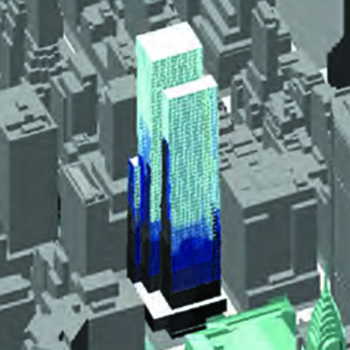
17 October 2016
X Information Modeling: Data-Driven Decision Making in the Design of Tall Buildings
James von Klempeter, Luc Wilson & Mondrian Hsieh, Kohn Pedersen Fox Associates
This paper outlines X-Information Modeling or XIM, a method of data-driven decision-making for the design of tall buildings. Developed over its application on more than...

17 October 2016 | New York City
CTBUH 2016 China Conference - Session 3a: Tall Buildings and Urban Habitat Q&A
Monday, October 17, 2016. Shenzhen, China. Richard Witt, Quadrangle Architects; James von Klamperer Kohn Pedersen Fox Associates; Keith Griffiths, Aedas; Peter Brannan, Arquitectonica answer questions...
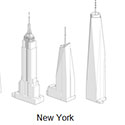
17 October 2016 | New York City
X Information Modeling: Data-Driven Decision Making in the Design of Tall Buildings
This presentation outlined X-Information Modeling or XIM, a method of data-driven decision-making for the design of tall buildings. Developed over its application on more than...
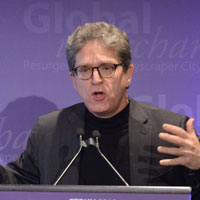
26 October 2015 | New York City
One Vanderbilt: Approving Midtown’s Tallest Office Building
This presentation traces the development of One Vanderbilt from early design through the complex city approvals process that is ultimately allowing for its realization. From...

26 October 2015 | New York City
Interview: James von Klemperer
James von Klemperer of KPF is interviewed by Chris Bentley during the 2015 CTBUH New York Conference at the Grand Hyatt New York. James discusses...

18 September 2014 | New York City
Urban Density and the Porous High Rise: The Integration of the Tall Building in the City
September 18, 2014. Shanghai, China. James von Klemperer from Kohn Pedersen Fox Associates PC presents at the 2014 Shanghai Conference closing plenary on "Urban Density...

17 October 2016
X Information Modeling: Data-Driven Decision Making in the Design of Tall Buildings
This paper outlines X-Information Modeling or XIM, a method of data-driven decision-making for the design of tall buildings. Developed over its application on more than...

26 October 2015
One Vanderbilt: Approving Midtown’s Tallest Office Building
This paper traces the development of One Vanderbilt from early design through the complex city approvals process that is ultimately allowing for its realization. From...

22 October 2015
New York: The Ultimate Skyscraper Laboratory
A timeline of skyscraper completions in New York uncannily resembles the boom and bust cycles of the United States in the 20th and early 21st...
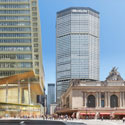
01 June 2015
Urban Density and the Porous High-Rise: The Integration of the Tall Building in the City
As the skyscraper matures as a building type, its role in actively connecting to, and reinforcing, major threads of urban fabric becomes increasingly more important....
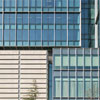
16 September 2014
Urban Density and the Porous High-Rise: The Integration of the Tall Building in the City
As the skyscraper matures as a building type, its role in actively connecting to, and reinforcing, major threads of urban fabric becomes increasingly more important....
27 July 2018
In the 2018 CTBUH Journal Issue III, Aine Brazil, Vice Chairman, Thornton Tomasetti, talks about her career highlights in high-rises and the support for more women in engineering.
Subscribe below to receive periodic updates from CTBUH on the latest Tall Building and Urban news and CTBUH initiatives, including our monthly newsletter. Fields with a red asterisk (*) next to them are required.
View our privacy policy